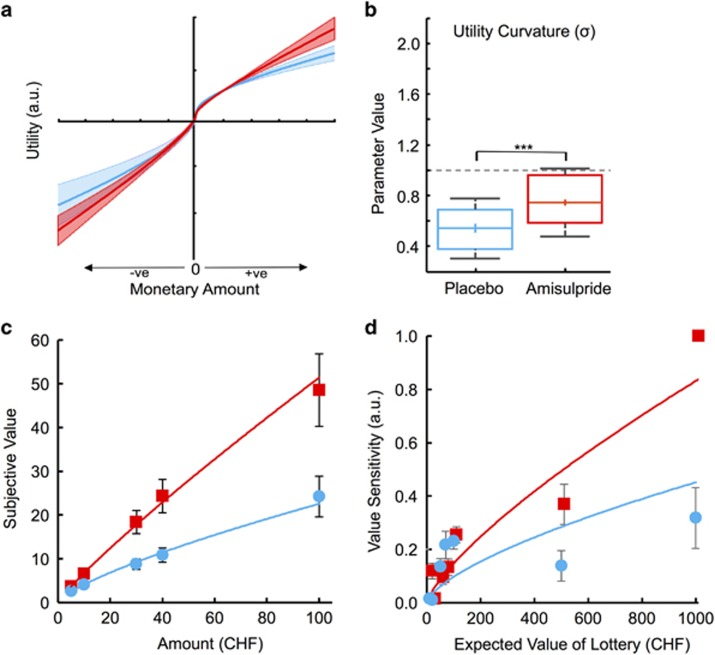Figure 2.
Observed effects of amisulpride on subjective value function from prospect theory. (a) Fitting a prospect theory model to participants’ choices revealed a significantly more linear value function for the amisulpride (red) relative to the placebo group (blue). (b) These findings were supported by utility curvature (σ) parameters being significantly closer to 1, ie, linearity (gray dashed line) in the amisulpride group. Boxplots show that the mean (+) and median (−) coincided; *** indicates p<0.001; boxes represent 25th and 75th percentiles and whiskers the 9th and the 91st percentile. (c) Recovered value functions for different reward magnitudes revealed a steeper and more linear function for the amisulpride group (red), indicating lower risk aversion when compared with the placebo group (blue) (d). As both utility curvature and probability weighting (Figure 3) functions were more linear under amisulpride, sensitivity to increases in the expected value of the option should also be increased. This was confirmed by a logistic regression of choices of the higher expected value option against the expected value of the option that allowed us to estimate regression weights as a proxy for the expected value sensitivity in the two groups. Participants rarely encountered extremely high option magnitudes as they were associated with high risk. Accordingly, we could not plot an error bar for the amisulpride group at CHF 1000. Error bars represent the SEM.

